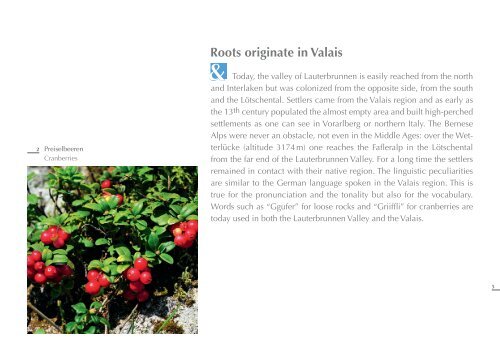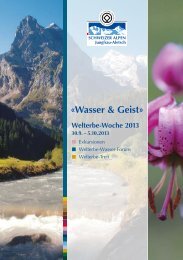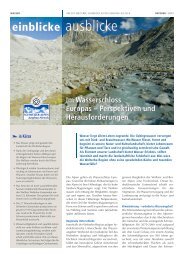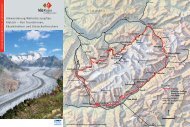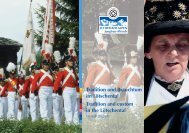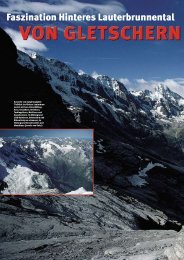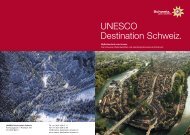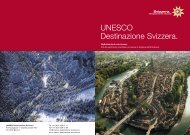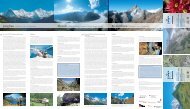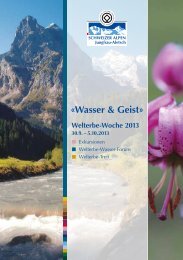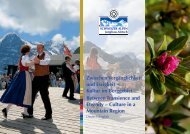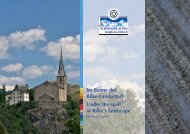Broschüre - UNESCO Welterbe Schweizer Alpen Jungfrau-Aletsch
Broschüre - UNESCO Welterbe Schweizer Alpen Jungfrau-Aletsch
Broschüre - UNESCO Welterbe Schweizer Alpen Jungfrau-Aletsch
Erfolgreiche ePaper selbst erstellen
Machen Sie aus Ihren PDF Publikationen ein blätterbares Flipbook mit unserer einzigartigen Google optimierten e-Paper Software.
Roots originate in Valais<br />
2 Preiselbeeren<br />
Cranberries<br />
Today, the valley of Lauterbrunnen is easily reached from the north<br />
and Interlaken but was colonized from the opposite side, from the south<br />
and the Lötschental. Settlers came from the Valais region and as early as<br />
the 13th century populated the almost empty area and built high-perched<br />
settlements as one can see in Vorarlberg or northern Italy. The Bernese<br />
Alps were never an obstacle, not even in the Middle Ages: over the Wetterlücke<br />
(altitude 3174 m) one reaches the Fafleralp in the Lötschental<br />
from the far end of the Lauterbrunnen Valley. For a long time the settlers<br />
remained in contact with their native region. The linguistic peculiarities<br />
are similar to the German language spoken in the Valais region. This is<br />
true for the pronunciation and the tonality but also for the vocabulary.<br />
Words such as “Ggufer” for loose rocks and “Griiffli” for cranberries are<br />
today used in both the Lauterbrunnen Valley and the Valais.<br />
5<br />
2


